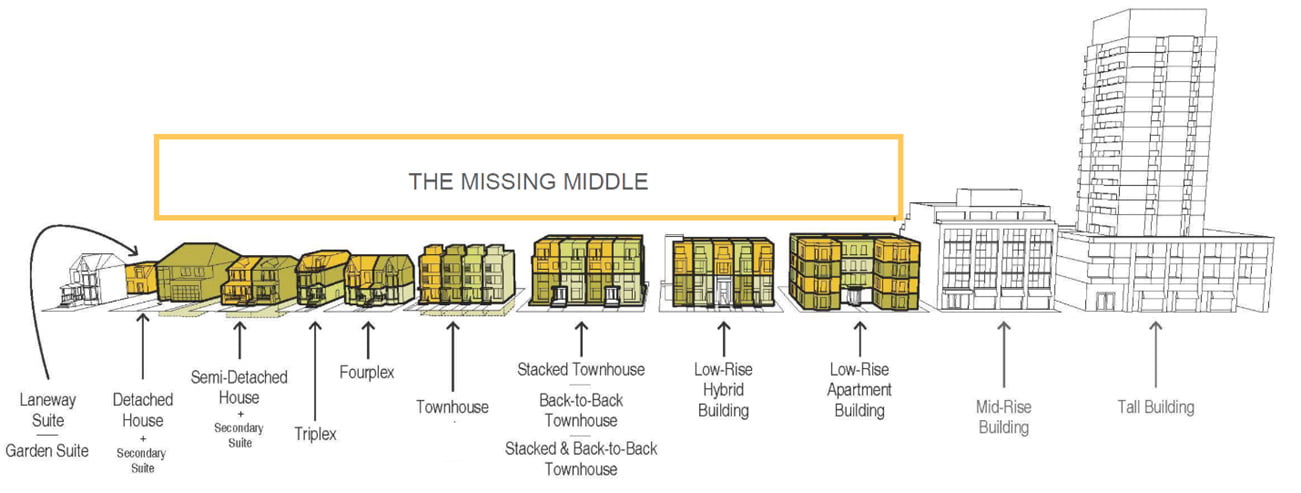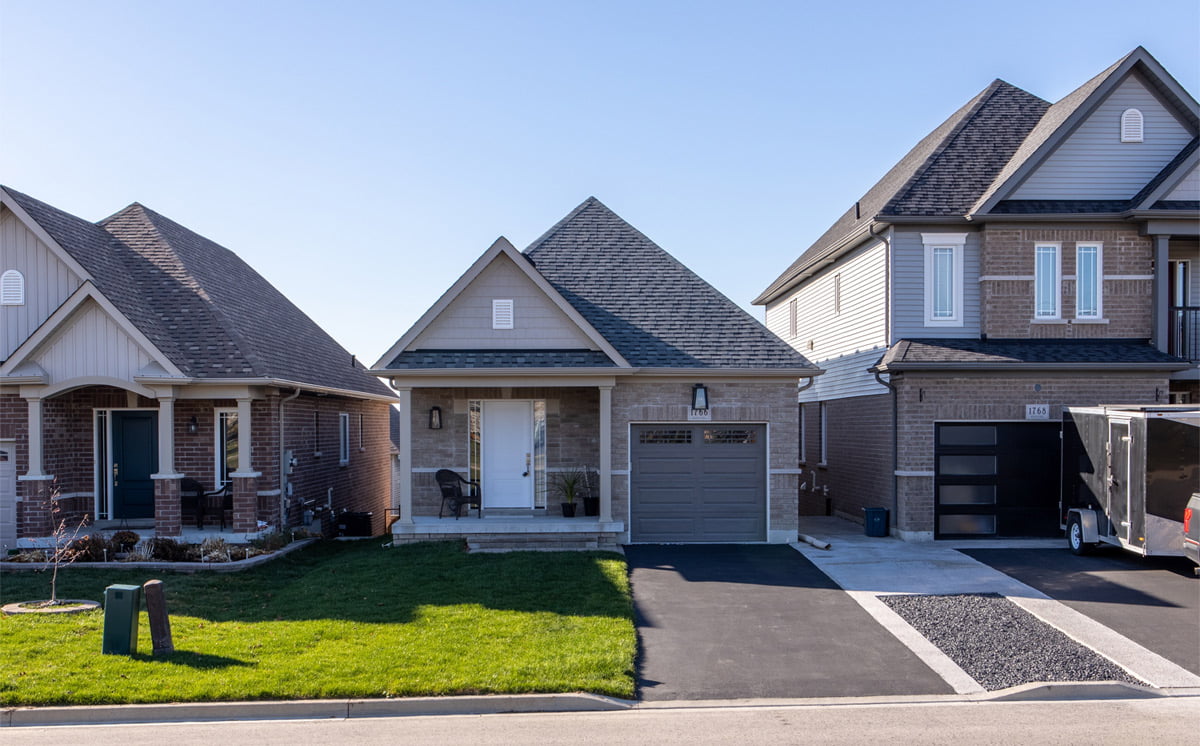Most cities and towns in Ontario are occupied by single use, single unit detached residential housing. This form of residential dominates. For example, more than 60% of residentially zoned land in Toronto consists of housing where the base zoning by-law permission only permits one residential unit. However, recent public policy and legislative changes are aimed at changing this dominant form of housing to address the missing middle.
Missing middle housing refers to residential that fits within the centre of the residential building type spectrum. At the low-density end of the spectrum is single family housing, consisting of detached and semi-detached residential where there is one residential dwelling unit. At the opposite end of the spectrum, one will find mid-rise and tall buildings ranging in height from eight storeys to over fifty storeys and containing dozens or hundreds of residential dwelling units. In between, there are residential building types which include laneway suites and garden suites upon detached or semi-detached properties, duplex, triplex, fourplex, multiplex, townhouse, and low-rise apartment buildings. These building types contribute to the missing middle.

While few mature neighbourhoods have some legacy missing middle housing types, more recent examples are limited. This is because existing zoning by-laws and other restrictive regulations tend to be focused on single use permissions. A property owner is saddled with securing lengthy, often contentious development approvals to add residential accommodation. The uncertainty of the public process to change the single use permissions is compounded by the added costs associated with development charges, park levies, education charges and other expenses.
Over the past several years, the Ontario provincial planning framework encourages more housing options, including the ability to secure additional residential units for properties that have traditionally been limited to one unit. This has become an ever-increasing goal for municipalities as well, particularly given the large influx of new resident populations, spurred on by increased immigration, mobility, and demand for urban living.
The sustainability of our urban environment depends on the ability to adapt and evolve with changing circumstances. The process of accepting change from underutilized single use properties to more intense forms of housing requires a balanced approach. It involves ensuring compatibility while incorporating mitigative measures to minimize impacts. In this manner, the integration of varied building types into the space that has been historically used for a single built form can achieve the goals and objectives of increased housing while maintaining healthy neighbourhoods.
Our office has been working on different building types within mature and maturing neighbourhoods since its inception in 1998. We stay up to date on the changes that have been occurring at the provincial level, as well as across the Cities and Towns within the Greater Toronto Area. Find out more, or have your questions addressed, by contacting us with your particular circumstances.



